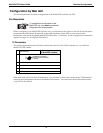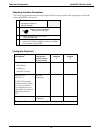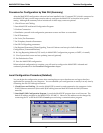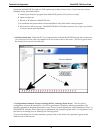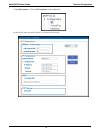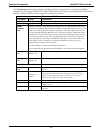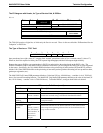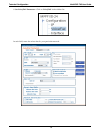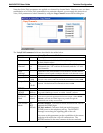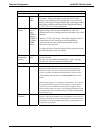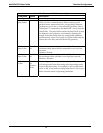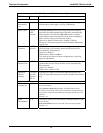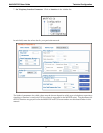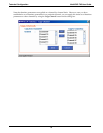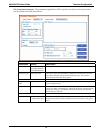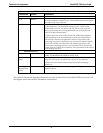
MultiVOIP FXS User Guide Technical Configuration
63
Note that Voice/FAX parameters are applied on a channel-by-channel basis. However, once you have
established a set of Voice/FAX parameters for a particular channel, you can apply this entire set of
Voice/FAX parameters to other channels by using the Copy Channel button and its dialog box.
The Voice/FAX Parameters fields are described in the tables below.
Voice/Fax Parameter Definitions
Field Name Values Description
Default --
When this button is clicked, all Voice/FAX parameters are set
to their default values.
Select
Channel
1-24
1-16
1-8
Channel to be configured is selected here. The “-24” unit has
24 channels, the “-16” unit has 16 channels, and the “-8” unit
has 8 channels.
Copy
Channel
--
Copies the Voice/FAX attributes of one channel to another channel.
Attributes can be copied to multiple channels or all channels at once.
Voice Gain -- Signal amplification (or attenuation) in dB.
Input Gain
+31dB to
–31dB
Modifies audio level entering voice channel before it is sent over the
network to the remote VOIP. The default & recommended value is 0 dB.
Output Gain
+31dB
to
–31dB
Modifies audio level being output to the device attached to the voice
channel. The default and recommended value is 0 dB.
DTMF Parameters
Duration
(DTMF)
60 –
3000 ms
When DTMF: Out of Band is selected, this setting determines how
long each DTMF digit ‘sounds’ or is held. Default = 100 ms.
DTMF
In/Out of
Band
Out of
Band, or
Inband
When DTMF Out of Band is selected, the MultiVOIP detects DTMF
tones at its input and regenerates them at its output. When DTMF
Inband is selected, the DTMF digits are passed through the
MultiVOIP unit as they are received.
Out of Band
Mode
RFC
2833,
SIP Info
RFC2833 method. Uses an RTP mode defined in RFC 2833 to
transmit the DTMF digits.
SIP Info method. Generates dual tone multi frequency
(DTMF) tones on the telephony call leg. The SIP INFO
message is sent along the signaling path of the call.
You must set this parameter per the capabilities of the remote
endpoint with which the voip will communicate. The
RFC2833 method is the more common of the two methods.



